Daily Tour
31 people
___
Tsum Valley Manaslu Circuit Trek, an incredible 21-day journey, takes you through some of the most remote and beautiful terrains in the Himalaya in Nepal. This trek combines the wonders of the Manaslu Circuit Trek and the hidden gem of the Tsum Valley Trek, opened to trekkers in 1995 and 2008, respectively. Perfect for adventurers seeking solitude and authenticity, it offers a peaceful experience far from the busy trails of other trekking regions.
The trek weaves through stunning landscapes, from lush rhododendron and bamboo forests to steep river valleys. You’ll cross the vibrant Budhi Gandaki River several times, immersing yourself in the ever-changing scenery. On average, trekkers walk about six hours daily, enjoying the sights and sounds of nature while trekking through the Manaslu Conservation Area, home to diverse wildlife, including the elusive snow leopard.
As you climb higher, the scenery becomes more dramatic, with breathtaking views of Ganesh Himal, Sringi Himal, and the towering Mt. Manaslu. This region is a haven for trekkers looking to enjoy both nature and culture. The trail is dotted with ancient stupas, colorful chortens, and monasteries, offering glimpses into the spiritual world of Lamaism.
The Tsum Valley Trek takes you to one of the most secluded regions of the Himalayas. Rugged and untouched by modernization, this area is rich in culture and tradition. Villages in Tsum Valley preserve a unique way of life, deeply rooted in Buddhist practices. You’ll visit historical sites like Mu Gompa and Rachen Nunnery, and pass through serene alpine meadows with jaw-dropping mountain views.
This portion of the trek offers a peaceful escape and is less commercialized, making it ideal for those who crave an authentic trekking experience. Whether you’re exploring the valley’s pristine landscapes or interacting with friendly locals, the Tsum Valley adds a special charm to this Himalayan adventure.
The trek also includes crossing the challenging Larkya La Pass at 5,160 meters. This high-altitude pass rewards you with panoramic views of snow-covered peaks and a sense of accomplishment. Descending from the pass, you’ll reach Bimthang, a picturesque village surrounded by stunning glacial landscapes. Many consider Bimthang Trekking a highlight of the journey, thanks to its serene beauty.
As the Best Trekking Agency in Nepal, Nature Heaven Treks and Expedition ensures your adventure is safe, enjoyable, and unforgettable. With expert guides and personalized services, we specialize in organizing the Best Treks in Nepal, from challenging expeditions to Easy Treks in Nepal for beginners.
Our team’s deep knowledge of Nepal Treks and Expedition makes us the perfect partner for exploring the Himalaya in Nepal, whether you’re trekking, touring, or climbing in Nepal.
The Tsum Valley Manaslu Circuit Trek combines natural beauty, cultural depth, and thrilling adventure. Whether you’re a seasoned trekker or new to the trails, this journey promises a unique experience. Join Nature Heaven Treks and Expedition for your next Nepal Tour and discover why these are some of the Best Treks in Nepal!

Upon your arrival in Kathmandu, our dedicated airport team will warmly greet you and escort you to your hotel. Look for our representatives at the terminal gate—they’ll be holding a nameplate for easy identification, ensuring a smooth and welcoming start to your Nepal Tour.
In the evening, join us for a delightful welcome dinner, a perfect chance to connect and discuss your upcoming Nepal Treks and Expedition adventure. Before the dinner, take some time to settle in, unpack, and relax. If time permits, explore the vibrant streets around your hotel and soak in the lively atmosphere of Thamel, known as the heart of Kathmandu's tourist scene.
After the welcome dinner, you’re invited to discover the colorful nightlife of Thamel, with its bustling markets, live music, and cozy cafes. End the day with a restful night at your hotel, recharging for the incredible journey ahead. Whether you’re embarking on the Tsum Valley Trek, Manaslu Circuit Trek, or other trekking in Nepal, we ensure a memorable start to your Himalayan adventure.
Before embarking on your trek, we’ve planned a guided sightseeing tour around Kathmandu to immerse you in Nepal’s rich cultural heritage. A warm and knowledgeable guide, along with a private car and driver, will pick you up from your hotel lobby at the designated time. The tour includes visits to iconic historical landmarks like the Monkey Temple (Swayambhunath), Kathmandu Durbar Square, and the magnificent Boudhnath Stupa. Each site offers a fascinating glimpse into the vibrant culture and history of Nepal Tour.
After the morning explorations and a relaxing lunch break, we’ll gather at our office. Here, you’ll meet your mountain guide, an expert in Nepal Treks and Expedition, who will provide a detailed briefing on the trek itinerary. This is also the time to pack your duffle bags and conduct a thorough check of all your trekking in Nepal gear. Our team will assist you in ensuring you’re fully prepared, with any last-minute shopping opportunities to pick up essential items for your journey.
With everything set, we recommend spending the rest of the day resting and rejuvenating in anticipation of the adventure ahead. Whether you’re heading for the Manaslu Circuit Trek, Tsum Valley Trek, or exploring the Himalaya in Nepal, this preparation day sets the tone for an unforgettable trekking experience with the Best Trekking Agency in Nepal, Nature Heaven Treks and Expedition.
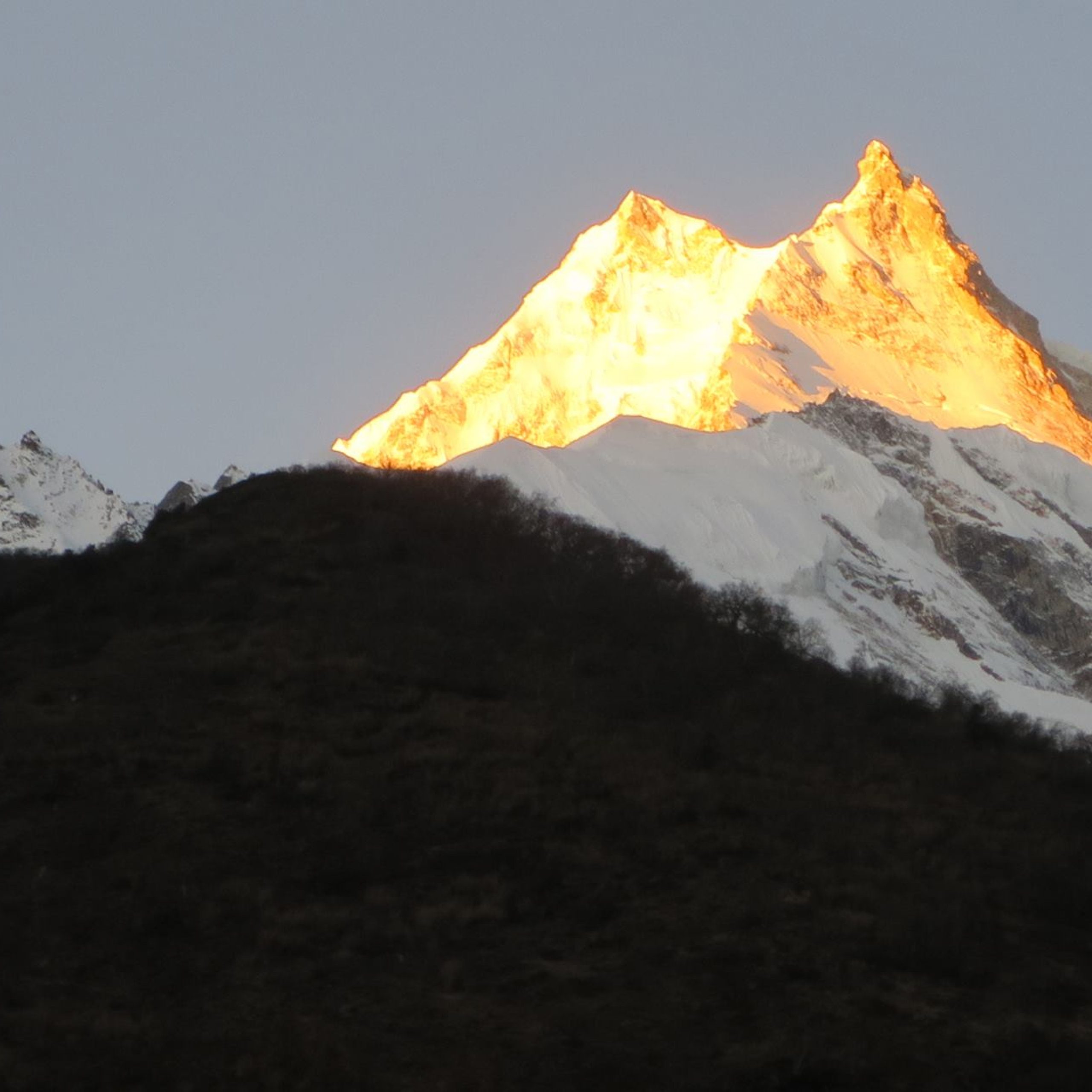
Starting early from Kathmandu, your journey begins along the Prithvi Highway, tracing the scenic Trishuli River. This drive unveils a breathtaking panorama of Nepal Tour highlights, featuring lush green hills, cascading waterfalls, and terraced fields, perfectly showcasing the natural beauty of trekking in Nepal.
As the journey progresses, the horizon opens up to reveal majestic Himalayan peaks such as Manaslu, Annapurna, Ganesh Himal, and Langtang Himal—a captivating preview of the adventure ahead. Transitioning onto the rugged terrain towards Arughat, the road becomes more adventurous, with a bumpy ride leading to Machha Khola. This dynamic start sets the tone for an unforgettable Manaslu Circuit Trek and Tsum Valley Trek, immersing you in the spirit of exploration with the Best Trekking Agency in Nepal, Nature Heaven Treks and Expedition.
Leaving Machha Khola, the trail winds along the Budhi Gandaki River, offering a captivating journey through lush forests teeming with wildlife, including playful monkeys and langurs. This section of the Manaslu Circuit Trek showcases the raw beauty of trekking in Nepal, blending nature and adventure seamlessly.
Passing through Khorla Besi, the trail ascends to Tatopani, renowned for its natural hot springs—a perfect spot to relax and rejuvenate. From there, you'll tackle two bridge crossings over the Budhi Gandaki River, advancing to Doban. The trek continues through landslide-prone areas and the charming village of Yaruphant, where nature's rugged terrain meets serene village life.
A wooden bridge marks your path forward, leading to Jagat, a culturally rich Gurung village celebrated for its hospitality. As a gateway to the restricted areas of the Tsum Valley Trek and Manaslu Circuit Trek, Jagat is a pivotal milestone. Here, you'll register your restricted area permits at the check post, officially entering the heart of the Himalaya in Nepal. This step opens the door to the region's pristine landscapes, setting the stage for one of the best treks in Nepal, guided by the expertise of the Best Trekking Agency in Nepal, Nature Heaven Treks and Expedition.
Crossing a suspension bridge, we leave Jagat behind and begin an ascent to Salleri (1,353 m). The trail offers captivating views as it steadily climbs alongside the Budhi Gandaki River. Passing through scenic landscapes, we reach Sirdibas (1,420 m), a charming village that showcases the culture of the region.
Before arriving at Philim (1,570 m), we cross the Budhi Gandaki River once more, soaking in the breathtaking surroundings. From here, the trail continues upward to Ekle Bhatti, a peaceful spot nestled amidst the rugged beauty of the Manaslu Circuit Trek. This stretch offers a perfect mix of natural beauty and cultural immersion, making it a highlight of the journey through the Himalaya in Nepal.
Starting from Chumling, our trek kicks off with a one-hour ascent, transitioning into a gentle descent along a leveled trail. As we enter the captivating Tsum Valley, the route ascends to Kowo (2,630 m), offering stunning views of the Ganesh Himal range. The trail then descends briefly before climbing again to Chhokang Paro, where we pass numerous ancient Buddhist stupas, adding cultural richness to the breathtaking journey.
The journey from Chhekampar to Mu Gompa is a lengthy and less-traveled route, ideal for those seeking solitude and adventure. Gradually ascending, we reach Lamagaon (3,302 m), passing a stupa that reflects the region's rich Buddhist heritage. The trail continues with a crossing over the Shiar Khola and winds past Phurbe (3,251 m), navigating two more bridges before arriving at Nile village (3,361 m). From Nile, a steep climb leads to Mu Gompa, a sacred monastery offering breathtaking Himalayan panoramas. Mu Gompa is a spiritual gem and a significant highlight of the Tsum Valley trek.
Today, we retrace our steps to Chhekampar, following the familiar trail as we descend to Phurbe (3,251 m). At this point, two routes diverge toward Chhekampar. Opting for an alternate path, we have the opportunity to visit the historic Ranchen Gompa (3,240 m), a significant site of Buddhist culture. Along the journey, we cross two bridges before reaching Chhekampar, completing another enriching segment of the Tsum Valley trek.
Setting off early from Chhekampar, we descend to Kowo and navigate a series of ascents and descents, making our way back to Chumling. Retracing our steps, we descend from Chumling, cross a bridge, and follow a winding path, crossing two more bridges on the way to Lokpa. Even on the return journey, the scenic vistas and breathtaking landscapes remain awe-inspiring, offering stunning views of the Tsum Valley and surrounding Himalayan peaks.
Today marks our transition onto the Manaslu Circuit. After crossing a bridge, we ascend to Nyak Phedi. Continuing our climb, we cross two more suspension bridges over the Budhi Gandaki River, eventually reaching Pewa. Trekking through lush bamboo forests, we make a steep ascent to Deng, a charming Gurung village offering stunning views of Siringi Himal. This section of the trek combines rich cultural experiences with breathtaking mountain vistas, setting the stage for the adventure ahead.
The trek progresses, winding through lush farmlands before making a dramatic crossing over the Budhi Gandaki River on a swaying suspension bridge. The ascent to Rana marks the beginning of the more secluded realms of the Budhi Gandaki Valley. As we traverse ancient forests adorned with mani stones, the trail to Ghap offers both a physical challenge and a spiritual journey. Passing through Prok village, trekkers are treated to majestic views of Singri Himal, enriching the visual experience. Alongside the river, marked by numerous crossings, the trail is flanked by dense forests and ancient stupas. This segment culminates with a rewarding climb to Namrung, offering an unparalleled sense of achievement and anticipation for the adventures ahead on the Manaslu Circuit Trek.

Namrung, located in the heart of the Himalayas, welcomes trekkers with breathtaking views of Hiunchuli, Singri Himal, and Ganesh Himal. Mornings in Namrung are enchanting, offering panoramic mountain vistas and delicious breakfasts to start the day. After breakfast, the trek to Lho begins, ascending steeply through alpine forests to reach Lihi village, where the shift in vegetation and the prominent influence of Tibetan Buddhism become evident. The trail is decorated with chortens and expansive barley fields, reflecting the region’s rich culture and agricultural practices. As we continue towards Low Village for the overnight stay, the towering presence of Mt. Manaslu accompanies us, enhancing the journey's scenic beauty and tranquil atmosphere.

Departing from Low Village, our path winds through lush agricultural fields, offering a closer look at local life. We cross a small stream fed by the Punggung Glacier on our way to Sama Gaun. Today's trek includes a rewarding side trip to the traditional Pung Gyen Gompa, providing a deeper understanding of the region’s spiritual heritage amidst steep, uneven trails. Upon reaching Samagaun, a visit to the ancient Ribung Gompa immerses us further in the area's rich Buddhist traditions. This segment of the trek not only challenges the body but also nourishes the spirit, combining the stunning natural beauty of the Manaslu region with profound cultural experiences.
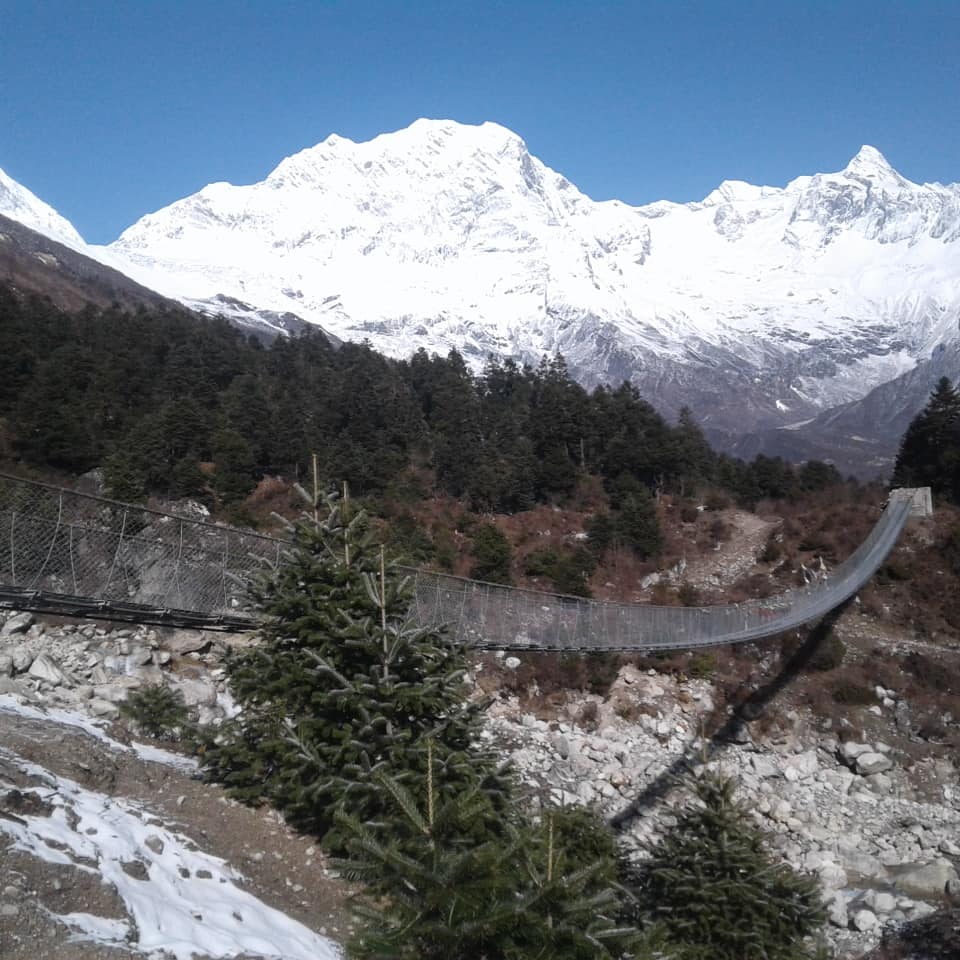
In Samagaun, we take a well-deserved day of rest, recognizing the importance of acclimatization at an altitude of over 4,500 meters. If the visit to Pung Gyen Gompa did not occur the previous day, it is scheduled for today. Additionally, we have the opportunity for an enriching hike to Manaslu Base Camp and Birendra Lake, two key highlights that showcase the region's breathtaking natural beauty. After the hike, we return to Samagaun to spend the rest of the day at a slower pace, allowing us to relax, absorb the serene surroundings, and interact with the local people, further deepening our cultural and spiritual experience.
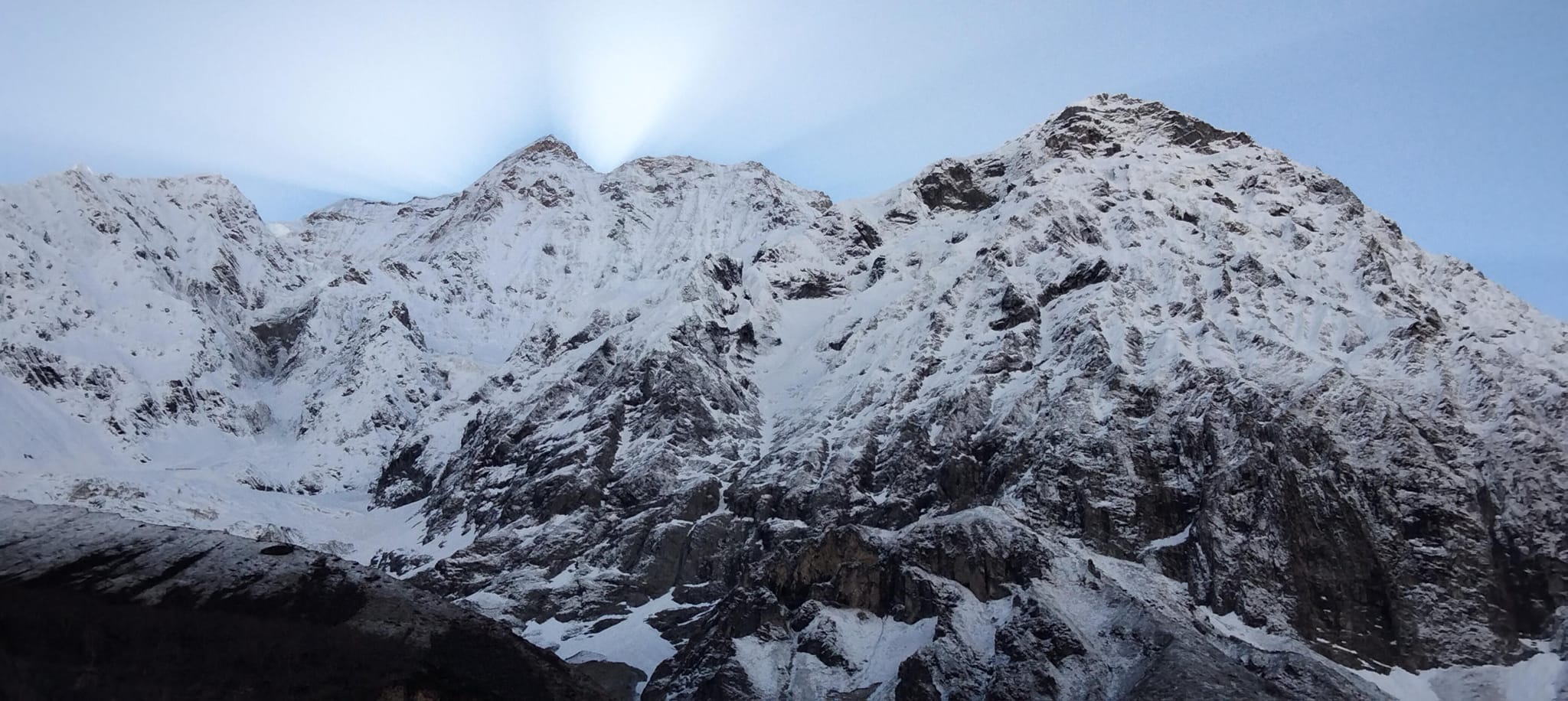
Today unfolds as a blend of pleasure and scenic beauty as we depart from Samagaun. Our journey takes us across a pasture, ascending to offer breathtaking views of the valley. We weave through tranquil juniper and birch forests, highlighting the area’s rich biodiversity. Our descent leads us to the Budhi Gandaki Riverbed, where we cross via a charming wooden bridge. A steep climb on the opposite side of the river brings us to Samdo, a village that offers stunning views of Mount Manaslu. This Tibetan refugee village is nestled in spectacular surroundings, providing an enriching glimpse into the resilient spirit and rich culture of its inhabitants.
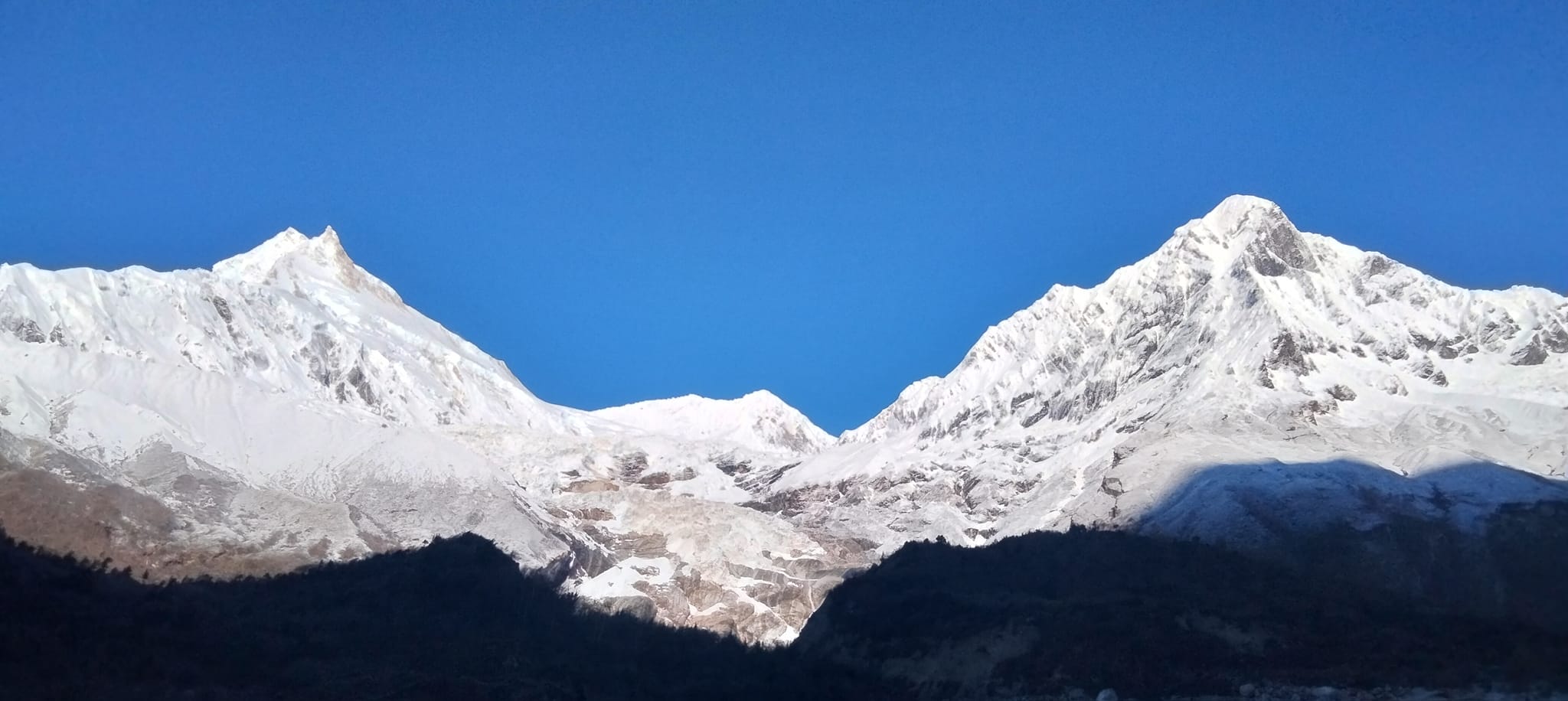
Descending from Samdo, the trail meanders along the scenic edges of hills and fields. We pass ancient mani walls and cross the Budhi Gandaki River via a rustic wooden bridge. The path continues along the Athahra Saya River, merging with the Larke River, with fluttering prayer flags and venerable mani walls lining the way. The journey takes us through the Larkya Glacier, offering stunning vistas of the surrounding landscapes. As we wind through the Salkha Khola Valley, the trail ascends to 4,480 meters, reaching the stone guesthouse known as Larkya Phedi. This basic dormitory-style accommodation stands amidst the majestic Himalayas, with Mt. Manaslu towering in the backdrop, encapsulating the grandeur of the Manaslu Circuit Trek.
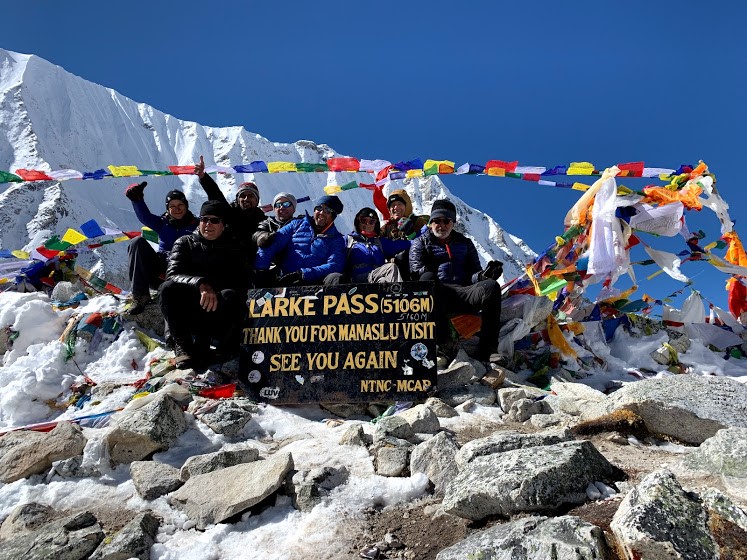
Today marks the pinnacle of our Manaslu Circuit Trek as we set out to cross the formidable Larkya La Pass. Departing from Dharamsala (also known as Larkya Phedi), the trail leads us through a moraine, briefly descending to a tranquil lake, where we prepare for the challenge of strong winds. The trail becomes rougher and less defined, navigating a steep grassy slope. Continuing along the moraine, we reach a key edge marked by two significant landmarks, guiding us toward four frozen lakes. A final, strenuous ascent brings us to the crest of Larkya La Pass, where panoramic mountain vistas of Himlung Himal, Annapurna II, Mt. Kang Guru, and Cheo Himal offer breathtaking views. The descent from the pass is equally stunning, leading over the highest moraine and veering west through a steep moraine bed, gradually descending to a grassy moraine. The trail then winds downhill to a picturesque meadow, eventually opening to a vast, open expanse dotted with small houses and mani walls, guiding us to Bhimthang. This segment encapsulates the essence of adventure and the unparalleled beauty of the Himalayas.
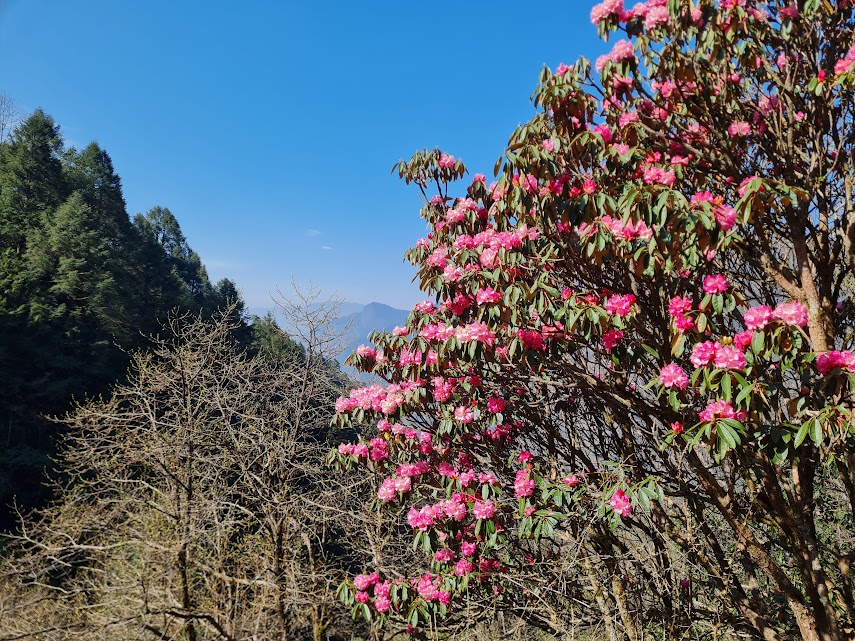
Having conquered the most challenging segment of the Manaslu Circuit Trek, the trail ahead is primarily marked by descents. From Bhimthang, our route leads downward through lush pastures, continuously unfolding stunning views. We cross the Dudh Khola River, immersing ourselves in the tranquil beauty of rhododendron forests. The journey meanders through captivating river valleys and vibrant farmlands, offering a glimpse into serene rural life. The trail then ascends gently to Gho village, a picturesque settlement nestled in the heart of nature. From Gho, we continue our trek towards Tilje, where we will rest for the night, reflecting on the adventures behind us and anticipating the journey ahead.
Departing Besisahar early, our drive to Kathmandu is long but graced with picturesque views of lush green hills, meandering rivers, and cascading waterfalls. Arriving in Kathmandu by late afternoon, you'll have the rest of the day at your leisure. Take this opportunity to relax, perhaps do some window shopping in Thamel, explore nearby tourist attractions, or unwind with a soothing spa visit. To celebrate the completion of our journey, Nature Heaven Treks and Expedition will host a farewell dinner in the evening, where we'll share memories of our unforgettable adventure.
Allow our experts at Nature Heaven Treks and Expedition to help you Plan one of the most Memorable Vacations based on your interests with their in-depth knowledge of the Himalayas, they can craft the journey of your dreams considering your preferred location, time frame, and Budget
No, you can't trek Tsum Valley and Manaslu without a guide, but it's recommended to hire one for safety and to manage permits and logistics.
The Tsum Valley Manaslu Circuit trek is considered challenging due to its high altitude, long distances, and steep terrain, requiring good fitness and acclimatization.
Prior trekking experience is highly recommended for the Tsum Valley Manaslu Circuit due to its challenging nature and the physical demands of high-altitude hiking.
The Manaslu Circuit Tsum Valley trek typically starts in Soti Khola, after a drive from Kathmandu, and progresses through diverse terrains to reach the valley.
Manaslu is considered less commercialized and less crowded than Everest Base Camp but can be equally challenging due to its remote paths and higher altitudes.
The Manaslu Tsum Valley trek spans about 20 to 25 days, covering a route that combines the Manaslu Circuit with the serene and remote Tsum Valley.
The best seasons for the Manaslu Circuit and Tsum Valley trek are spring (March to May) and autumn (September to November), offering clear skies and stable weather.
Manaslu is famous for its stunning natural beauty, challenging trekking routes, rich cultural heritage, and being the world's eighth-highest mountain at 8,163 meters.
To reach Tsum Valley, fly or drive from Kathmandu to Soti Khola, then begin the trek. Arrange permits and transportation in Kathmandu before departure.
The Tsum Valley lies at altitudes ranging from about 1,900 meters at its lower end to around 3,700 meters at its upper reaches near Mu Gompa.
Tsum Valley is worth visiting for its pristine landscapes, unique Tibetan culture, and tranquil trekking experience away from more crowded routes in Nepal.
The highest point of the Manaslu Circuit Tsum Valley trek is the Larkya La Pass, which reaches an elevation of approximately 5,106 meters (16,752 feet).
Highlights of the Tsum Valley Manaslu Trekking include:
- Rich Tibetan-influenced culture and ancient monasteries
- Stunning landscapes and remote villages in Tsum Valley
- Majestic views of Ganesh Himal, Sringi Himal, and Mount Manaslu
- Crossing the challenging Larkya La Pass
- Serene, less-crowded trails
- Diverse flora and fauna
- Unique cultural experiences and traditional hospitality
For Tsum Valley Manaslu Trekking, pack:
- Warm clothing layers
- Waterproof jacket and pants
- Trekking boots
- Sleeping bag
- Sunscreen and sunglasses
- Water purification tablets
- First aid kit
- Snacks and a reusable water bottle
- Trekking poles
- Hat and gloves
- Map and compass
- Portable charger
- Lightweight backpack
- Headlamp with extra batteries
- Personal toiletries and medications
Yes, altitude sickness is a concern on the Manaslu Trekking, especially when crossing high passes like Larkya La. Proper acclimatization and awareness of symptoms are crucial.
wz9zx3